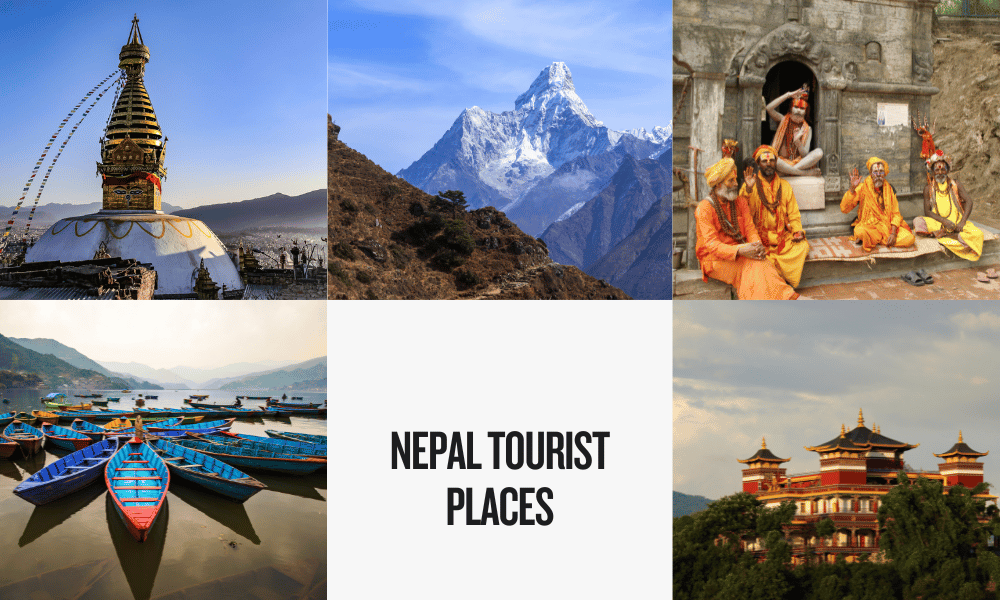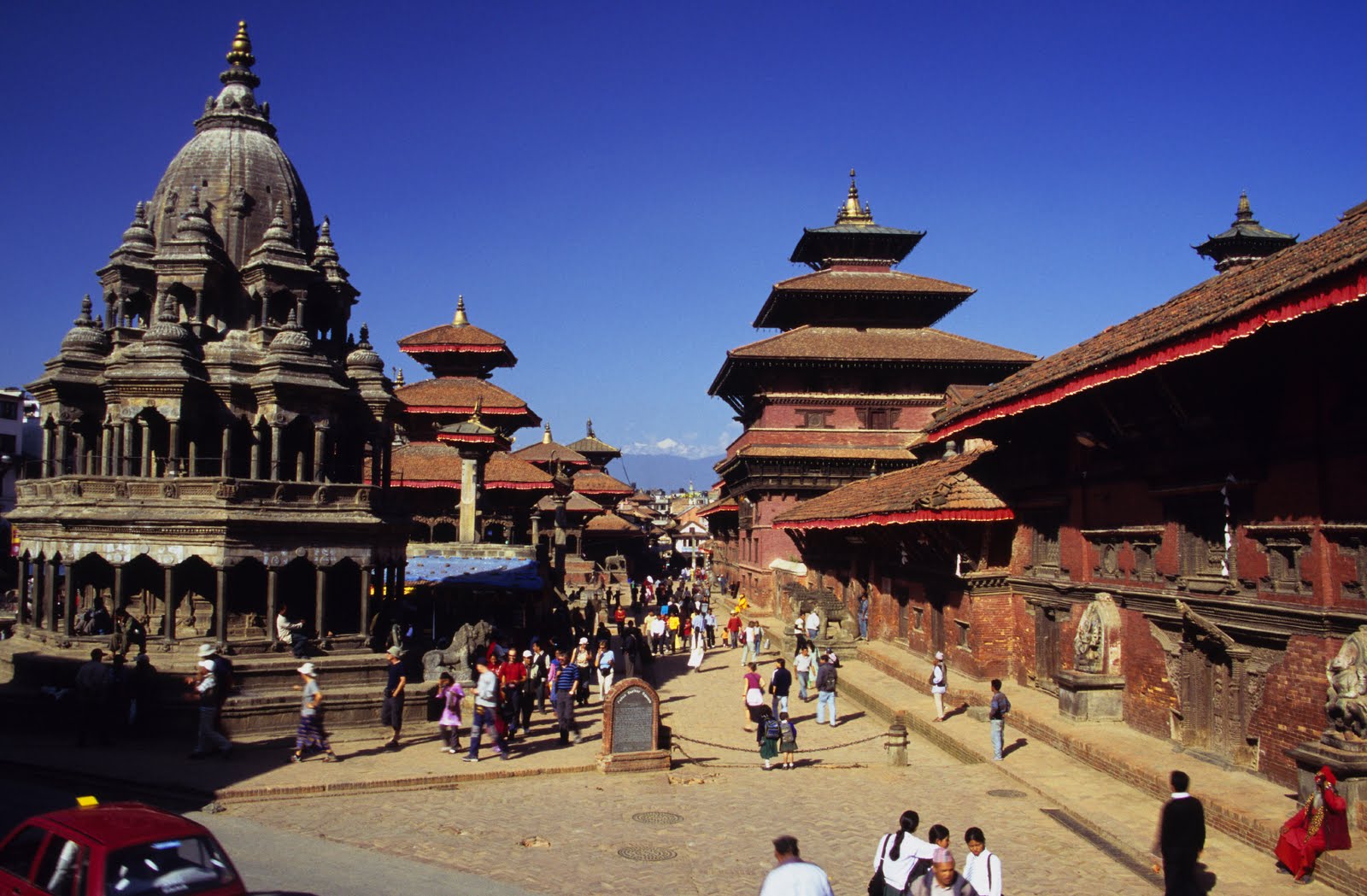
Nepal, a landlocked gem nestled in the heart of the Himalayas, is a destination that ignites the soul and beckons the adventurer. From the majestic peaks that pierce the azure sky to the ancient temples that whisper tales of a bygone era, Nepal offers an unparalleled tapestry of natural beauty, rich history, and vibrant culture. Whether you dream of trekking through breathtaking landscapes, immersing yourself in spiritual practices, or simply soaking in the unique atmosphere of its ancient cities, a journey to Nepal promises to be an unforgettable experience.
This comprehensive guide will equip you with everything you need to plan your adventure to the "Rooftop of the World," covering its captivating history, must-see attractions, essential travel tips, diverse accommodation options, convenient transportation, and the ideal times to embark on your Nepalese odyssey.
A Glimpse into Nepal’s Storied Past

Related Articles about Nepal: A Journey to the Rooftop of the World:
- Ukraine: A Journey Through History, Culture, and Unyielding Spirit
- Brazil: A Symphony of Nature, Culture, and Adventure – Your Ultimate Travel Guide
- Georgia: Where Ancient History Meets Breathtaking Landscapes
- A Traveler’s Handbook to Singapore: A Jewel of Southeast Asia
- Singapore: A Jewel of Southeast Asia – Your Ultimate Travel Guide
Nepal’s history is as multifaceted and dramatic as its geography. For centuries, it remained a collection of independent kingdoms, each with its own distinct identity. The unification of Nepal under the Shah dynasty in the 18th century marked a pivotal moment, laying the foundation for the nation we know today.
Ancient civilizations flourished in the fertile valleys. The Kathmandu Valley, a UNESCO World Heritage Site, is a testament to this rich past, boasting ancient stupas, intricate palaces, and sacred temples that have witnessed centuries of religious devotion and political intrigue. Buddhism and Hinduism have long coexisted and intertwined, shaping the spiritual landscape and influencing the art, architecture, and daily life of Nepalis.
The Gurkha soldiers, renowned for their bravery and loyalty, gained international recognition for their service in various armies. In the 20th century, Nepal transitioned from an absolute monarchy to a constitutional monarchy, and more recently, to a federal democratic republic. Despite political shifts, the country has held onto its core cultural values and its deep connection to its heritage.
Top Attractions: A Kaleidoscope of Wonders
Nepal’s allure lies in its staggering diversity, offering something for every traveler. Here are some of its most celebrated attractions:
1. Kathmandu Valley: The Cultural Heartbeat
- Kathmandu Durbar Square: A UNESCO World Heritage Site, this ancient royal palace complex is a mesmerizing array of temples, courtyards, and statues. Explore the intricate woodwork of the Taleju Temple, marvel at the Hanuman Dhoka palace, and witness the Kumari Ghar, the residence of Nepal’s living goddess.
- Pashupatinath Temple: One of the most sacred Hindu temples in the world, dedicated to Lord Shiva. Witness cremation ceremonies on the banks of the Bagmati River (a poignant but integral part of the Hindu faith), admire the pagoda-style architecture, and soak in the spiritual atmosphere.
- Swayambhunath Stupa (Monkey Temple): Perched atop a hill overlooking the valley, this ancient Buddhist stupa is adorned with the watchful eyes of Buddha. The ascent is rewarded with panoramic views and a vibrant community of playful monkeys.
- Boudhanath Stupa: The largest stupa in Nepal and one of the most important Buddhist pilgrimage sites outside of Tibet. The immense white dome, surrounded by prayer wheels and monasteries, emanates a profound sense of peace and devotion.
- Patan Durbar Square: Often considered the most beautiful of the valley’s Durbar Squares, Patan boasts exquisite Newari architecture, including the Golden Temple and the Royal Palace.
2. Pokhara: Gateway to the Annapurna Region
- Phewa Lake: A serene and picturesque lake, offering boat rides with stunning reflections of the Annapurna range. The Tal Barahi Temple, situated on an island in the lake, is a popular spiritual spot.
- Sarangkot: A hilltop offering breathtaking panoramic views of the Himalayas, including Machhapuchhre (Fishtail Mountain) and the Annapurna range. Sunrise and sunset here are truly magical.
- World Peace Pagoda: Another hilltop stupa offering incredible views of Pokhara Valley and the surrounding mountains.
- Devi’s Fall and Gupteshwor Mahadev Cave: Natural wonders that showcase the power of water and the mysteries of underground caves.
3. Trekking Paradises: The Himalayas Await
Nepal is synonymous with trekking, offering routes for all fitness levels and interests.
- Everest Base Camp Trek: The ultimate challenge for many, this iconic trek takes you to the foot of the world’s highest mountain. The journey is as much about the cultural immersion and stunning scenery as it is about reaching base camp.
- Annapurna Circuit Trek: A classic trek that circumnavigates the Annapurna massif, offering diverse landscapes, from lush rhododendron forests to arid alpine deserts, and passing through charming villages.
- Annapurna Base Camp (ABC) Trek: A shorter but equally rewarding trek that leads you into the heart of the Annapurna Sanctuary, surrounded by towering peaks.
- Langtang Valley Trek: A less crowded but incredibly beautiful trek, offering spectacular mountain views, pristine forests, and a glimpse into Tamang culture.
- Ghorepani Poon Hill Trek: A popular shorter trek known for its stunning sunrise views over the Annapurna and Dhaulagiri ranges from Poon Hill.
4. Chitwan National Park: A Wildlife Encounter
- Jungle Safaris: Explore the subtropical plains of Chitwan on elephant-back, jeep, or on foot to spot one-horned rhinoceroses, Bengal tigers (though sightings are rare), elephants, deer, and a plethora of birdlife.
- Canoe Rides: Glide along the Rapti River, offering a unique perspective of the park and its inhabitants.
5. Lumbini: The Birthplace of Lord Buddha
- Maya Devi Temple: The sacred site where Queen Maya Devi is believed to have given birth to Siddhartha Gautama, the future Buddha.
- Monasteries: Explore the various international monasteries built by different Buddhist countries, each with its own unique architectural style and spiritual ambiance.
Essential Travel Tips for a Smooth Journey
- Visa Requirements: Most nationalities can obtain a visa on arrival at Tribhuvan International Airport (KTM) in Kathmandu. Check the latest visa regulations for your country before you travel.
- Currency: The Nepalese Rupee (NPR) is the official currency. Indian Rupees are also widely accepted in many areas. ATMs are available in major cities and tourist hubs, but it’s advisable to carry some cash, especially for rural areas.
- Language: Nepali is the official language. English is widely spoken in tourist areas, hotels, and by guides. Learning a few basic Nepali phrases will be greatly appreciated by the locals.
- Health and Vaccinations: Consult your doctor about recommended vaccinations and malaria precautions. Tap water is generally not safe to drink; opt for bottled or purified water.
- Altitude Sickness: If you plan to trek at high altitudes, be aware of the symptoms of altitude sickness and acclimatize gradually.
- Respect Local Customs: Nepal is a deeply religious and culturally rich country. Dress modestly when visiting religious sites, remove your shoes before entering temples and homes, and avoid public displays of affection.
- Bargaining: Bargaining is common in local markets, but do so politely and with a smile.
- Connectivity: Wi-Fi is available in most hotels and cafes in cities. You can also purchase a local SIM card for better connectivity.
- Tipping: Tipping is not mandatory but is appreciated for good service.
Accommodation Options: From Budget to Luxury
Nepal offers a wide spectrum of accommodation to suit every budget and preference:
- Budget Guesthouses and Teahouses: For trekkers, teahouses along popular routes offer basic but comfortable rooms and meals at affordable prices. In cities, numerous budget guesthouses provide clean and simple accommodation.
- Mid-Range Hotels: Most cities and tourist towns have a good selection of mid-range hotels offering comfortable rooms, en-suite bathrooms, and basic amenities.
- Luxury Hotels and Resorts: Kathmandu and Pokhara boast a growing number of upscale hotels and resorts that offer excellent service, modern facilities, and often stunning views.
- Homestays: For a more immersive cultural experience, consider a homestay in rural villages. This allows you to live with a local family, share meals, and gain a deeper understanding of Nepalese life.
Transportation: Navigating the Diverse Terrain
Getting around Nepal can be an adventure in itself, with various options available:
- Air Travel: For longer distances or to save time, domestic flights connect major cities like Kathmandu, Pokhara, and Bharatpur (for Chitwan). This is the quickest but also the most expensive option.
- Tourist Buses: A popular and cost-effective way to travel between major tourist destinations. These buses are generally more comfortable than local buses and cater to international travelers.
- Local Buses and Minivans: The most budget-friendly option for traveling between towns and villages. These can be crowded and journeys may take longer due to frequent stops.
- Taxis and Private Cars: Available in cities for local travel and for hiring for longer journeys. Negotiate fares before starting your journey.
- Motorbikes and Scooters: Renting a motorbike or scooter can be a convenient way to explore cities and their surroundings at your own pace. Ensure you have the necessary license and wear a helmet.
- Rickshaws and Cycles: Ideal for exploring within cities, especially in Kathmandu and Patan.
- Jeeps and 4WDs: Essential for reaching remote areas and for jungle safaris in Chitwan.
Best Time to Visit Nepal: Chasing the Perfect Season
Nepal experiences distinct seasons, each offering a unique travel experience:
- Autumn (September to November): This is arguably the best time to visit Nepal. The skies are clear, offering excellent mountain views, and the weather is pleasant with moderate temperatures. It’s ideal for trekking and sightseeing. The festivals of Dashain and Tihar also fall during this period, offering a vibrant cultural immersion.
- Spring (March to May): Another excellent season for visiting Nepal. The rhododendrons are in full bloom, painting the hillsides with vibrant colors. The weather is warm and pleasant, making it suitable for trekking and exploring the cities.
- Winter (December to February): While the higher mountain regions can be very cold and snow-covered, the valleys and lower altitudes remain relatively mild. This season is good for cultural tours and for those who prefer fewer crowds. However, trekking in higher altitudes might be challenging due to snow.
- Monsoon (June to August): This is the rainy season in Nepal. While it brings lush greenery, heavy rainfall can disrupt travel, make trekking trails muddy and slippery, and obstruct mountain views. However, prices might be lower during this period, and if you’re looking for a more tranquil experience and don’t mind occasional rain, it can still be a viable option.
Embark on Your Nepalese Adventure
Nepal is a land of profound beauty, deep spirituality, and unwavering resilience. It’s a place that challenges you, inspires you, and ultimately, transforms you. From the awe-inspiring grandeur of the Himalayas to the intricate artistry of ancient temples, the warmth of its people, and the thrill of adventure, Nepal promises a journey that will linger in your heart long after you’ve departed. So, pack your bags, open your mind, and prepare to be captivated by the magic of Nepal. Your adventure to the Rooftop of the World awaits.






